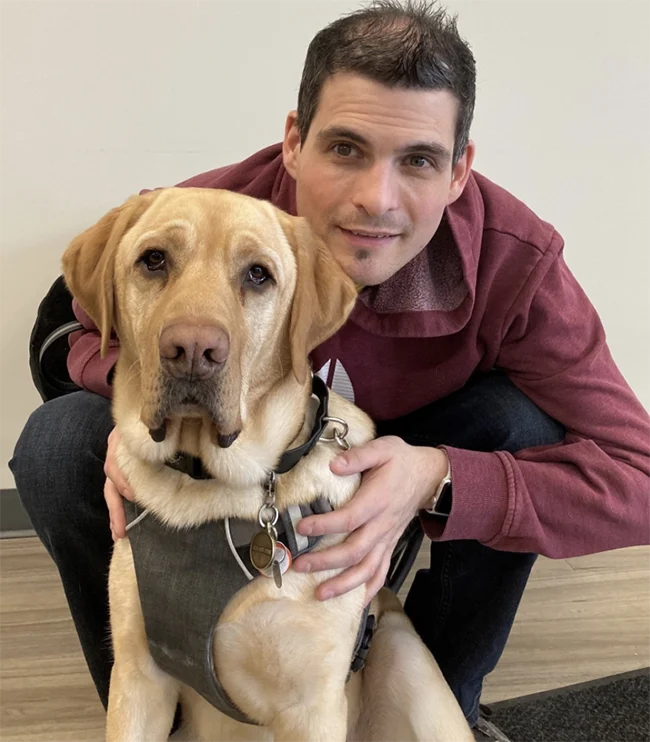Annual eye exams highlighted during Vision Health Month

By Rick Garrick
WINDSOR — The Canadian National Institute for the Blind (CNIB)’s Ryan Hooey is raising awareness of the importance of annual eye examinations for people with diabetes for Vision Health Month in May.
“One of the great things that’s happening is there are some programs out there in Ontario that will do eye screening for diabetic retinopathy,” says Hooey, manager of major gifts at the CNIB and citizen of Keeseekoowenin First Nation in Manitoba. “They will use AEYE devices, they will use handheld devices and these are available at your nation. It early detects and it could save your vision, it will detect early-on stage development of diabetic retinopathy, and that’s the eye condition I have. With the advances in technology, there’s even better treatments out there that might be able to help you save your eyesight or even reduce vision loss.”
Hooey, who has lived with type 1 diabetes since he was seven-years-old, says he woke up one morning about 13 years ago unable to see due to diabetic retinopathy when he was 26-years-old.
“We found out that both retinas in my eyes had detached completely,” Hooey recalls. “There was a big adjustment period and it’s still going on today. I think it’s going to be lifelong learning because technology evolves, diabetes management evolves, a bunch of things evolve and who knows, maybe one day I’ll be driving a car again, not because I get my vision back but because it’s completely automated.”
Hooey says he had surgery to reattach his retinas a few days after losing his vision but it did not restore his vision.
“That’s when the wake-up call kind of came that, oh, I need to learn how to live in a very sighted world being unsighted,” Hooey says. “And that’s where the CNIB training had come in through the independent living skills or orientation and mobility, even just down to the fact of learning the simple things that we take for granted every day.”
Hooey says the two most difficult things that he had to relearn were buttering toast and putting toothpaste on a toothbrush.
“I made a mess and I still do to this day,” Hooey says. “There will be an inch of butter on one half of my toast and then nothing on the other half. And if I’m not squirting a tube of toothpaste into my mouth directly, I’m getting it on the mirror, on the floor, on the sink, on the toilet, all over myself, and all over everything. So it’s really interesting that two of the most simple things that most of us do multiple times a day just were one of those things that you take for granted.”
Hooey says he has learned to depend on his other senses since losing his vision.
“It’s just more of an acquired skill that you learn to depend on your hearing more, so for instance in the work that I do I’m listening to … someone that I’m talking to on the phone [but] I’m also in the other ear listening to my computer talk to me and in my brain I’m typing on my laptop keyboard,” Hooey says. “So you’re able to kind of compartmentalize and multitask a little bit like that.”
Hooey says he is now a guide dog handler after a guide dog, Joe, was matched with him about four years ago.
“We travel quite frequently throughout Canada and the U.S. up until recently,” Hooey says. “We get to go and do some pretty cool things and we work together as a team to navigate through the world, and he keeps me and my five-year-old daughter Abigail safe while doing it.”
Hooey says he also uses a variety of assistive technologies on his computer and phone.
“So I can do a lot of things that sighted folks can do with their phone,” Hooey says. “I dictate emails, I dictate text messages, I can answer calls, I can surf the web and do social media, I just can’t do pictures as well as they would or take pictures.”


